#Monterey Marine Protected Area
Explore tagged Tumblr posts
Text
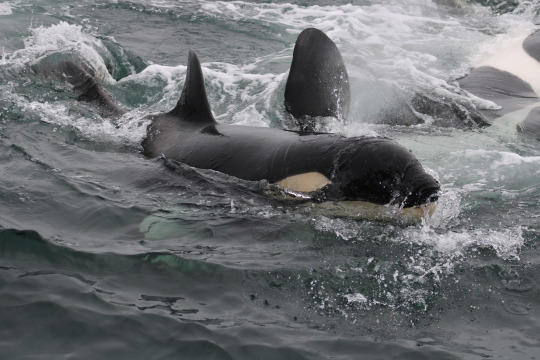
Heya ya'll, here's maybe the best photo I am every going to take in my life.
I was out with the Monterey Bay Whale Watch when we got a chance to observe the CA-150 Bigg's Killer Whale pod after a successful sea lion hunt. The pod consists of one adult male named Jimmy, an enormous adult matriarch named Andi, three other female killer whales, and a total of four calves. The pod was totally showboating, celebrating a successful hunt and engaging in a lot of play behavior like spectacular breaching and spy-hopping . At one point a mother/calf pair engaged in some kind of roll/cuddle behavior where the young calf perched on top of his mom and rolled along while their mother pushed them along upside down directly towards the boat. I was in the perfect spot to photograph the sequence and got this once in a lifetime shot.
#killer whale#Bigg's Killer Whale#orca#orca whale#marine science#cetacean#ocean#whale calf#CA-150 Pod#whale watching#whale conservation#whales#monterey#Monterey Marine Protected Area#monterey california#baby whale#baby animals#cute animals#Ya'll I was giggling hysterically and almost crying for like the entire hour we were observing the pod.
32 notes
·
View notes
Text
youtube
Listening in on Earth’s largest animal 🐋 🎶
With the blue whale’s massive size comes a massive appetite. But isn’t always easy finding their primary food source—krill—in the vast and dynamic waters of the ocean. How do these gentle giants find food and survive?
The Blue Whale Observatory is a network of acoustic instruments in Monterey Bay that aims to answer this question. The observatory records whale calls, krill swarm activity, and ocean conditions for four months straight every summer and fall when blue whales are most acoustically active in the area. These detailed recordings reveal more about the predator, prey, and environmental dynamics that drive blue whales’ behavior.

Findings from the Blue Whale Observatory can inform efforts to protect these endangered mammals. They also open up possibilities for studying other marine species in a similar way. Learning more about the dynamics of ocean life—from the tiniest krill to the largest whale — can help us become better stewards of our blue planet. 🌎 🐳
Learn more about the Blue Whale Observatory at: https://www.mbari.org/project/blue-whale-observatory/
98 notes
·
View notes
Text
Hey there, I’m slow to post on here, but I posted the fifth chapter of my current Chenford story, Worth the Wait.
The outline of this story has 3 acts. The first and second act have a decent amount of angst (but no major character deaths). The third act is full of happiness and dreams coming true. If you’re not ready for angst right now, please protect your mental health and read some other fluff. But if you’re up for lots of angst with a happy ending, please read and enjoy the ride.
Here’s a segment of the story to pique your interest.
Ashley was staring mindlessly out the window most of the time, lost in thought. But Tim had a plan to make the trip back more interesting than just driving the 5 through the middle of California. He remembered a conversation they had had a while ago about wanting to drive along the Pacific Coast Highway. So, he navigated them around Monterey Bay where they stopped to see some sea lions. Then he drove her down to Big Sur to see Bixby Bridge and the gorgeous scenery there.
As they approached San Simeon, he stopped at the elephant seal colony to watch them flopping around awkwardly for a while. He offered to take her up to Hearst Castle, but she declined and gave him a funny look. I must have remembered that wrong, he thought to himself. Next, they stopped in Morro Bay to see Morrow Rock and watch the sea otters living their best life in the kelp just off the shore.
While they were in Morro Bay, Tim picked up some lunch, and they found a spot along the ocean to sit and eat. As he was eating his cheeseburger and fries, he said, “Well, is this trip down the coast as good as you thought it would be?”
Ashley squinted at him. “I mean, I love looking at the ocean,” she said hesitantly. “And seeing the marine animals along the way has been… interesting.”
Tim furrowed his brow at her. “But you told me a while ago that you always wanted to take this trip along the coast. We talked about what we would see and where we would go. I know we talked about going all the way north to see the redwoods, but if we end up living up there it would be easy to go another day. And you really wanted to see the otters and elephant seals and sea lions, right? You said otters were your favorite marine animal.”
She tilted her head and looked at him for a moment. “Actually, I hate seals and sea lions. They’re bossy and invade huge sections of the beach. Plus, they are so stinky and loud. Otters are fine, I guess. We don’t have issues with them in LA. But if I could find a beach where seals and sea lions weren’t an issue in California, that’s where I would prefer to be.”
Tim scrunched his brow in frustration. He knew they had had this conversation. That’s why he had researched all the vista points along the way to make sure that Ashley could see everything that she had wanted to see.
“Maybe you’re thinking about a conversation with Genny? Did she want to take her kids to see all the animals?”
“No. We talked about going to Hearst Castle, too, and Genny’s kids wouldn’t have enjoyed that.”
“Hearst Castle? Huh. That kind of thing doesn’t really appeal to me either.”
It took him several minutes to realize who had had this conversation with months ago. He remembered talking about making the trip together and all the things that they would see along the way. He even remembered searching for the best restaurants in the area. Then a light bulb flicked on in his brain.
Lucy.
It was Lucy that wanted to take this trip. Lucy that wanted to see all the marine animals and Hearst Castle and Bixby Bridge and the rock formations in Big Sur and the famous Pebble Beach tree. The whole conversation rushed back into his mind. They were at a stake out one night, and she just kept going on and on. But it kept both of them awake, so he just let her talk. And, not one to enjoy sitting idly, he had joined in her search for the best things to do and see and eat along the route.
Once he realized the mistake that he had made, he became quiet and focused on eating his food. Ashley noticed the shift as his posture and facial expressions changed.
After a few more minutes, she said softly, “It was Lucy, wasn’t it? You had planned to go on this trip with Lucy. She was the one that wanted to see all of the things you took me to see.”
Tim looked over at her in surprise. He didn’t have to say anything for Ashley to see the truth on his face.
“I think I’m done eating,” she said. Then she stood up and walked briskly away from him.
Tim quickly gathered the rest of their food and threw it in the nearest trash can. Then he jogged to catch up to her. When he found her a minute later, she was vomiting behind a shrub.
“Ashley…” he started, but she held up her hand to silence him.
When she was done throwing up a minute later, she took a wipe out of her purse to clean her face and hands. Tim had his mouth open, eager to explain himself, but Ashley glared at him. “I think I’d like to go home now. No more stops.” Moving quickly, she navigated back to Tim’s truck.
Crap.
He’d really screwed that up royally. How had he managed to think it was Ashley who wanted to take this trip? For a moment his mind imagined how excited Lucy would have been to see the sea otters rolling around and playing with each other or the elephant seals barking and rolling over each other or the extravagant and beautiful rooms at Hearst Castle. But he had to suppress those ideas down as far as they would go. That would never happen now.
Now he needed to focus on mending the tear in his relationship with Ashley. He jogged after her and helped her into the truck. The last two hours of the drive were in complete and heavy silence. The tension between them was palpable. Tim had tried to apologize several times, but Ashley wasn’t interested in hearing it.
They had to stop a few times along the way for Ashley to throw up. But when Tim offered to help or asked if she had her nausea medicine, he only got a stony glare in return.
When they made it to her apartment, he had to run to keep up with her. He tried to follow her into her apartment, but she turned around and blocked the entry. “I just need some space right now. I’ll talk to you later.”
“Ash… Please. I’m sorry. It was an honest mistake. Really. Both of you really like the beach and the ocean, and I must have just mixed it up in my head.”
Ashley scowled at him. “How many of your coworkers have you ever gone on a trip with?”
He was surprised at the question. “Uhhh. None.”
“But you planned to go on this trip with Lucy?”
“She was just talking in the shop on a stake out. We didn’t… We weren’t going to go as a couple. And it’s not like we were actually going to do it together. We were just talking to stay awake and fill up time. At least, that’s what I think I remember,” he said as he thought about it harder again, his brow furrowed.
“See,” she said, pushing her index finger into his chest. “This is exactly what I’ve been trying to get you to see. Lucy was way more than your gopher or your partner to you. She probably still is.”
“She was my friend,” he said defensively. “You know that. But I did what you asked me to do. I haven’t talked with her since she visited me at the hospital. You already blocked and deleted her number on my phone. I don’t know what more you want me to do. I…”
“Save it,” she said abruptly with a fire in her eyes. “I…” she started, searching for words to match how she felt. “This is why I asked you to end your friendship with her. You two together…” She was at a loss for what to say and just stood there for a moment with her mouth open. Then she shook her head and said, “I… I just need some time alone. Don’t call me. I’ll call you when I’m ready.”
Read more here:
14 notes
·
View notes
Text




Humphrey the Whale
In October of 1985 for the first time ever a 90-foot-long, 40-ton humpback whale appeared in San Francisco Bay, and it was soon learned that he was in no mood to leave. The first sighting was barely of note, but within a week the whale had been dubbed Humphrey and he was the subject of front-page news across the Nation as he headed up the bay towards Sacramento. As time went on it became obvious that Humphrey was either lost or simply had no intent of leaving California’s Delta. Thousands of gawkers descended on the Delta for a chance to see him overwhelming the small town of Rio Vista, as expert marine biologists puzzled over how to get him turned around. Water assets from the US Coast Guard, Sheriff’s office, Fish and Wildlife all converged to protect and monitor him, but Humphry just kept on going into shallower and shallower water until he was within 27 miles of Sacramento. The Navy was called in to join the fray.
During the Vietnam War the U.S. Navy was soon tasked to augment its Blue Water Navy with a new Brown Water Navy designed to work inshore in the many shallow rivers and Deltas of South Vietnam. Sailors assigned to these new small boats were assigned the task of stopping the shipment of contraband on the river systems of Vietnam. In addition, this new Navy would be called on to provide fire support to infantry deployed along the river systems. The naval personnel assigned to these new units gave dearly as evidenced by the fact that the majority of the nearly 3,000 Navy and Coast Guard personnel to die during the war were serving in the Brown Water Navy.
Riverine warfare required the use of shallow draft, high speed, heavily armed boats capable of interdicting, pursuing and striking the enemy along inland rivers and waterways. The Navy needed to train operators for these boats and a place to train was needed in rivers and bays resembling the rivers and deltas of South Vietnam. The bays and sloughs of the North Bay Area were ideal for the task. Naval Inshore Operations Training Center (NIOTC) was established at Mare Island and soon the Brown Water Navy was training in San Pablo Bay and the Sonoma/Napa sloughs. The Brown Water Navy survived the Vietnam War and in October 1978 Special Boat Unit ELEVEN was commissioned as the successor to NIOTC. It was the Special Boat Unit ELEVEN, that was called on in 1985 to help redirect Humphrey the Whale back down the Sacramento River and out to sea.
Ten River Patrol Boats from Special Boat Unit Eleven helped herd Humphrey the Whale for two days. "It was exciting, and our people learned a lot," said Lieutenant Commander Paul Schemella, the unit's Executive Officer. The Navy boats provided a moving barrier behind the whale as the animal was lured from the river's shallow water, under five bridges, to the open ocean. Lead boats from the National Marine Fisheries Service had tagged Humphrey with a transmitter to assist in tracking and played tape recordings of whales feeding to lure Humphrey the 60 Miles to the Golden Gate. The sound equipment was provided by the Naval Postgraduate School in Monterey, California, and was operated by technicians from the school's physics department. When Humphrey neared the Golden Gate Bridge, Special Boat Unit Eleven crewmembers lowered pipes in the water and hit them with hammers in a final push to move the whale out of the bay 26 days after he first arrived. Hundreds of people lined Marina Green and the road that leads to Fort Point to see Humphrey on his way. That would have been the end of the story, but humpback whales are migratory and pass by the area every year. He was subsequently seen near the Farallon Islands off San Francisco, and he even entered Bodega Bay in 1989.
Then in 1990, Humphrey the Whale was back. This time beaching himself down at San Francisco’s Candlestick Park (since demolished) and causing traffic jams as people once again flocked to see him. Rescuers rushed to obtain the sound recordings of humpback whales that were used to rescue him in 1990 to lure him back out of the bay. As in the first rescue of Humphrey, the Navy joined the effort, this time providing a special underwater amplifier for the sounds. According to the National Oceanographic and Atmospheric Administration the lifespan of the humpback whale can be as much as 80 years so the Marine Mammal Center should probably keep those recordings handy.
Dennis Kelly
3 notes
·
View notes
Text
Hi Monterey Bay Aquarium social media team, I know you won't see this among the wave of attention this is going to get. But I hope someone at least reads it, and I hope it's not too sappy.
Rosa was an incredible otter, and incredible animal, and very near and dear to my heart. I'm born and raised in Northern California, and frequently visited the aquarium growing up. I continue to do so regularly.
I'm also a kayaker, freediver, SCUBA diver, and lover of wildlife. I was SCUBA certified down the street from the Aquarium. I've been spotting and enjoying marine mammals for my entire life. Over my lifetime, the sea otter population in the Monterey Bay has noticably, dramatically increased. I remember when it was rare, special, and fleeting to see them. Now they're a regular sighting. In some areas, the kelp mats have gotten thicker as the otters return, and fish flourish with them.
Rosa did that. Not singlehandedly, but the direct impact she had on raising otters, the amazing developments she helped create for the surrogate otter program, and the symbol of ocean conservation she became to get the public to protect marine mammals more... That was her.
More personally, Rosa and the aquarium touched my life in a lot of ways. Currently, I'm in a PhD program for molecular biology. Maybe it's not as direct an inspiration as ecology or marine biology, but my passion for biology started from ecology, and from the ocean. The unique ways that the aquarium detailed the little quirks that every organism evolved to survive goaded that curiosity onwards, forcing me to look deeper and deeper. According to my parents, the first coherent word I ever said was "ish", gesturing vaguely at the marine life behind the glass at the aquarium. I hadn't quite gotten the hang of the "f" sound.
The love of nature, animals, and biology that this stoked is part of the foundation of my passion for biology.
And Rosa was always there. I'm 26 years old. I technically went to the aquarium before Rosa was there, but I don't remember it. Rosa is so intimately tied to the aquarium in my mind. I loved going in through the old members entrance, and immediately running up the stairs to the otters- Rosa was the first otter I could pick out from the crowd consistently.
It'll feel emptier without her.
All I can hope is that Rosa, in some otter way, knew how incredible she was. I know she's "just" an otter, but she was such a symbol of conservation and the California coast, that this does hurt.
I'll make sure to say hi to all the otters soon <3
Remembering Rosa the sea otter
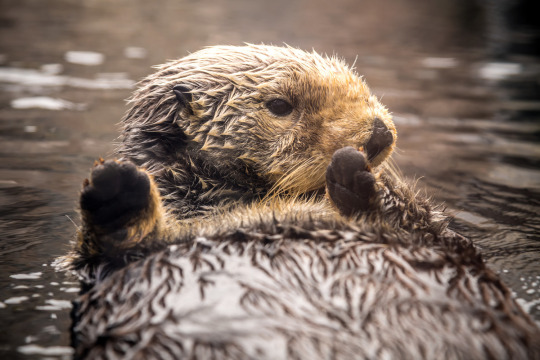
Hello Aquarium family. It’s with great sadness that we share that our beloved sea otter Rosa passed away today. At 24 years old, Rosa was the oldest resident otter at the Aquarium and one of our most experienced surrogate moms, having raised 15 stranded sea otter pups in her time with us.
While Rosa spent the last few months behind the scenes getting extra special care from our staff, she was the matriarch of the Sea Otters exhibit. Beloved and cherished by millions of visitors and fans of the live Sea Otter Cam, she was instantly recognizable thanks to her blonde head (eclipsed only by Ivy as our most grizzled of kelp grizzlies) and her signature head-all-the-way-back swimming style.
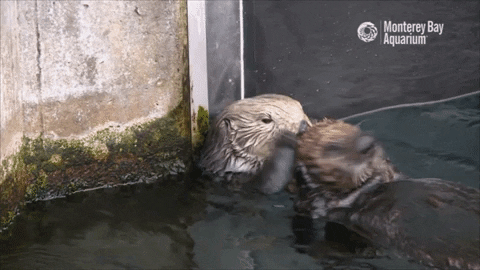
“Rosa was one of our most playful sea otters, and even at 24 years old, she would still be seen frolicking and wrestling with the younger otters when she instigated it,” said Melanie Oerter, curator of mammals. “Rosa was usually found sleeping against the window while on exhibit with her chin tucked tight into her chest and her tail swishing back and forth.”
After being found stranded as a four-week-old pup in September 1999, Rosa became part of the Aquarium family before our sea otter surrogacy program even took shape. Our Sea Otter Program staff raised her by hand for nearly seven months before releasing her to the wild.
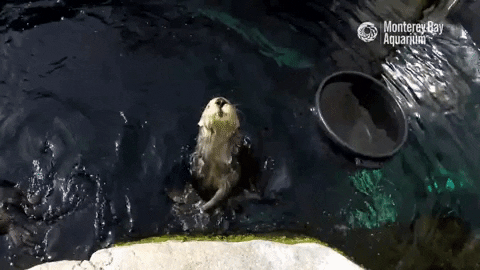
Rosa eventually returned to the Aquarium once again in March 2002 when she didn’t take to life outside of human care, and she immediately became a fixture in the formative years of our sea otter surrogacy program as a caring adoptive mother for rescued pups destined for wild release.
She was a delight to work with, though she certainly had her expectations of our staff according to the many Sea Otter Mammalogists who trained (were trained by?) Rosa over the years.

"Rosa was an incredibly smart otter! Generally calm and patient with the staff. However, she could be defiant at times and there would be no convincing her to do something she did not want to do," said Oerter. "She would often just look at us or swim away. I believe she was the one who was really training us all of these years. I certainly learned a lot from working with such an incredible otter. It has been a privilege and to say we will miss her is understated."
Rosa relaxed into retirement from surrogacy in 2019, acting as a companion and cornerstone in the ever-changing raft of otters in our care.
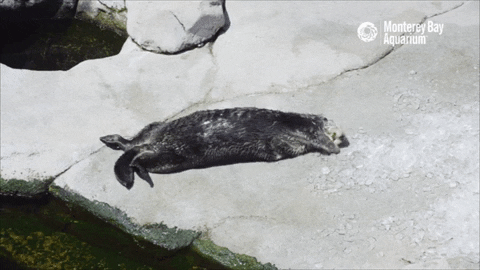
Wild female sea otters live between 15 and 20 years, and reaching the age of 24 is a testament to the exceptional care Rosa received throughout her life from our Veterinary and Animal Care teams. In recent years, she began showing signs of age-related health concerns. In the last few weeks, her health had been deteriorating. After an exam, the veterinary and animal care teams made the difficult choice to humanely euthanize Rosa because those health conditions were compromising her quality of life. She passed away peacefully, surrounded by her caretakers.
Rosa’s legacy lives on both at the Aquarium with our other resident sea otters Kit, Selka, Ivy, and Ruby, and in the wild, where sea otter pups she raised continue to raise pups of their own, contributing to the recovery of their species and their ecosystems along the California coast.
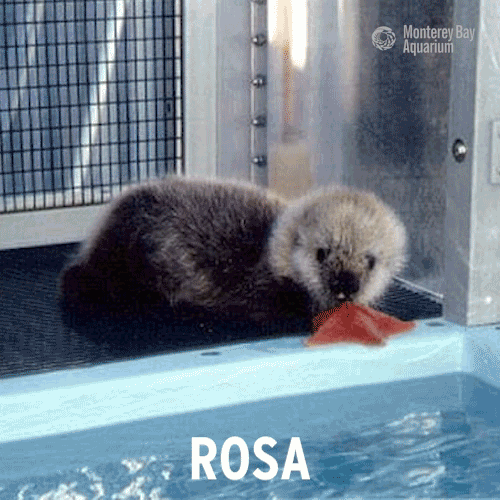
Rosa was an inspiration to millions as a charismatic ambassador for her threatened species while playing a leading role in the story of sea otter recovery from near-extinction during the fur trade. Rosa will be greatly missed by all of us who got to know her over the years.
To celebrate Rosa’s long life, please feel free to share photos and stories of your encounters with Rosa at the Aquarium in the comment section on this post, in her memory and for the staff and volunteers grieving her loss. Thank you all for being such a big part of Rosa’s life. 🦦♥️
youtube
7K notes
·
View notes
Text
Monterey Bay is currently having a discussion on marine protected areas!
1 note
·
View note
Text
Secret Whale Watching: Examining the Heavenly Beasts of California's Coast!

The energy of seeing a whale break the ocean's surface, its tremendous design framed against the horizon, is maybe nature's most shocking experience. For some purposes, whale watching has become a sought-after encounter, particularly along the coastlines of California, where the Pacific Ocean spills over with marine life. Among the best ways of leaving on this oceanic trip is through classified whale-watching visits, offering a comfortable and changed understanding far from the uproar of more excellent traveler boats. These world-class crusades and the standard continuous whale sightings make California one of the critical complaints for whale darlings.
The Charm of Private Whale Noticing
Private whale-watching visits are becoming pervasive because of various elements. Unlike standard visits, which can often incorporate numerous explorers compressed onto a boat, classified agreements grant more unassuming social occasions to participate in a more confidential experience. This decision is fantastic for families, nature darlings, visual artisans, and anyone inclined toward a consistent relationship with the marine environment. A secret approval gives flexibility concerning timing, complaints, and the untamed life you want to focus on.
Another fundamental advantage is the tweaked relationship with subject matter experts. On a secret visit, you have a committed helper, habitually an ocean life researcher or naturalist, who offers further information into whale lead, movement plans, and their current circumstance. This is viewed as a more luxurious, educational experience that goes past basically spotting whales positively.
Recent whale sightings, California’s first attraction
Recent whale sightings have the potential to research more far-off districts that larger vessels can't reach. These mystery pockets of the ocean regularly harbor stand out as everyday valuable encounters from customary traveler courses, giving a calm and peaceful air for whale watching. California's whale-watching scene is in full force, with progressing sightings beguiling tourists and local residents. The state's oceanfront waters reliably host an assortment of whale creature assortments because of their situation along key migration courses.
Each colder season and spring, around 20,000 dim whales adventure from the frigid to the warm lagoons of Baja California to imagine posterity before heading back north. Of late, eyewitnesses have reported seeing different mother-and-calf matches, particularly off the bank of Orange Region and the Channel Islands.
Top Whale-Watching Areas in California
One of the most thrilling parts of whale watching California is the range of places you can sit. The profound gorge through the cove establishes a supplement-rich climate that draws in various aquatic species. Whale-watching visits in Monterey Narrows are accessible all year, offering chances to see dim whales during their relocation and blue whales and humpback whales taken care of in the late spring months.
San Diego is another protected area for whale watching, especially for those keen on seeing the dark whale relocation. From mid-December to April, dim whales can frequently be seen from the shore or on coordinated boat visits as they pass by on their excursion to and from Mexico. San Diego's mild environment and quiet waters make it an optimal spot for sightseers to set out on a whale-watching.
Conclusion
Classified whale watching offers a striking technique for experiencing California's copious marine life. With the valuable chance to re-try your visit, appreciate more unassuming, more private social occasions, and explore distant districts, classified sanctions make whale watching an apparent encounter. As late sightings of humpback, faint, and blue whales show, the California coast remains one of the world's best places to see these splendid creatures comfortably. Whether you are a painstakingly pre-arranged whale watcher or a first-time swashbuckler, California's private whale-watching visits ensure a powerful journey across the untamed ocean, stacked with outstanding encounters and remarkable minutes.
0 notes
Text
Charting the Epic Journey: The Gray Whale Migration Map
The gray whale migration is one of nature's most awe-inspiring phenomena, a testament to the endurance and navigational prowess of these majestic marine mammals. Understanding this migration requires mapping an epic journey that spans thousands of miles along the Pacific coast of North America.
The Eastern North Pacific gray whale population, the most well-studied and numerous, follows a predictable annual route. Their journey begins in the late spring and summer months in the cold, nutrient-rich waters of the Bering, Chukchi, and Beaufort Seas. These Arctic feeding grounds, located between Alaska and Russia, provide the whales with an abundance of amphipods and other small organisms that make up the bulk of their diet.
As autumn approaches and Arctic ice begins to form, the gray whales embark on their southward migration. The first leg of their journey takes them along the Alaskan coast, past the Aleutian Islands, and into the Gulf of Alaska. From here, they continue south along the coasts of British Columbia, Washington, Oregon, and California.
This coastal route is crucial for navigation, as grey whale watching Baja are believed to use a combination of methods to find their way, including following the coastline, sensing Earth's magnetic field, and possibly using underwater topography as landmarks. The journey south is not non-stop; the whales make occasional pauses in areas with abundant food resources, such as the waters off Vancouver Island and in Monterey Bay, California.
By December and January, the majority of the population reaches their destination: the warm, shallow lagoons of Baja California, Mexico. Three main lagoons serve as the primary breeding and calving grounds: Laguna Ojo de Liebre (also known as Scammon's Lagoon), Laguna San Ignacio, and Bahía Magdalena. These protected waters provide ideal conditions for mothers to give birth and nurse their calves.
The northward migration begins in February and March, with mothers and their newborn calves being the last to leave, typically departing in April. This return journey follows a similar coastal route but often takes place further offshore. The whales travel in stages, with some individuals pausing to feed in productive areas along the way, particularly off the coasts of California and Oregon.
An interesting feature of the gray whale watching Baja migration map is the presence of some individuals that do not complete the full journey. A small population known as the Pacific Coast Feeding Group remains in the waters between Northern California and Southeast Alaska throughout the summer, instead of continuing to the Arctic.
The Western North Pacific gray whale population, critically endangered and much smaller in number, has a less well-defined migration route. These whales are believed to feed in the summer months off the coast of Russia's Sakhalin Island in the Sea of Okhotsk. Their wintering grounds are not as clearly established, but some individuals have been tracked migrating to breeding areas off the coast of Asia, including waters near China, Korea, and Japan.
Recent research has revealed some surprising deviations from the traditional migration map. In 2015, scientists tracked a gray whale that crossed the Pacific Ocean from Russia to Mexico, the longest mammal migration ever recorded. This discovery suggests that there may be more interchange between the Eastern and Western populations than previously thought.
Understanding and mapping the gray whale migration is crucial for conservation efforts. The information helps in identifying critical habitats, assessing the impacts of human activities such as shipping and offshore energy development, and monitoring changes in migration patterns that may result from climate change.
As our knowledge of gray whale migration continues to expand, so too does our appreciation for the remarkable journey these creatures undertake each year, reminding us of the interconnectedness of our world's oceans and the importance of protecting these vital marine highways. https://www.greywhale.com/gray-whale-watching-in-baja/
0 notes
Text
Exploring Central California: Top 5 Scenic Spots Along the Coast
Central California boasts some of the most breathtaking coastal scenery in the United States. From rugged cliffs to pristine beaches, this region offers an array of picturesque spots perfect for a leisurely drive or a weekend getaway. Whether you're a nature enthusiast, a photography buff, or simply seeking tranquility by the sea, Central California has something for everyone. Let's journey to discover the top five scenic spots along the coast.
Big Sur: Where Majestic Mountains Meet the Pacific
Big Sur is nestled between the Santa Lucia Mountains and the Pacific Ocean, a Central California coastline gem. Its dramatic landscape features sheer cliffs, towering redwoods, and pristine beaches, making it a haven for outdoor enthusiasts and nature lovers. One of the most iconic attractions in Big Sur is Bixby Creek Bridge, an architectural marvel that offers stunning views of the rugged coastline below. Visitors can also explore Pfeiffer Big Sur State Park, home to ancient redwoods and picturesque hiking trails that lead to hidden waterfalls and panoramic vistas. Whether camping under the stars or indulging in a gourmet meal at a cliffside restaurant, Big Sur promises an unforgettable experience.
Monterey Bay: Where Marine Life Thrives
Monterey Bay is renowned for its rich marine biodiversity and scenic beauty. The bay is home to abundant marine life, including sea otters, seals, dolphins, and whales, making it a paradise for wildlife enthusiasts and ocean lovers. Visitors can embark on a whale-watching cruise to glimpse majestic humpback whales or explore the world-famous Monterey Bay Aquarium, where interactive exhibits showcase the ocean's wonders. The scenic coastline of Monterey Bay also offers opportunities for kayaking, paddleboarding, and picturesque drives along the historic 17-mile Drive. With its stunning vistas and vibrant marine ecosystem, Monterey Bay is a must-visit destination for anyone exploring Central California's coast.
Morro Bay: Where a Volcanic Plug Stands Guard
Morro Bay is home to one of the most recognizable landmarks on the Central California coast: Morro Rock. This massive volcanic plug rises 576 feet above the bay, serving as a dramatic backdrop for the quaint seaside town of Morro Bay. Visitors can stroll along the Embarcadero, a bustling waterfront district lined with shops, restaurants, and art galleries, or explore the Morro Bay State Park, where hiking trails offer panoramic views of the bay and surrounding landscape. Outdoor enthusiasts can also enjoy kayaking, sailing, and birdwatching in the protected waters of Morro Bay National Estuary. Whether admiring the sunset over Morro Rock or indulging in freshly caught seafood, Morro Bay offers a tranquil escape along the Central California coast.
Santa Cruz: Where Surf Culture Thrives
Santa Cruz is synonymous with surf culture, boasting some of the best waves along the Central California coast. Surfers from around the world flock to iconic breaks like Steamer Lane and Pleasure Point to catch the perfect wave against the backdrop of the Santa Cruz Mountains. Beyond its vibrant surf scene, Santa Cruz offers many attractions for visitors of all ages. Explore the historic Santa Cruz Beach Boardwalk, an oceanfront amusement park featuring thrilling rides, arcade games, and classic fair food. Discover the area's natural beauty at Wilder Ranch State Park, where coastal trails wind through rugged cliffs and pristine beaches. With its laid-back vibe and stunning scenery, Santa Cruz captures the essence of California's coastal lifestyle.
Half Moon Bay: Where Coastal Charm Abounds
Half Moon Bay is a picturesque coastal town known for its idyllic beaches, charming downtown area, and scenic coastal trails. The highlight of Half Moon Bay is its rugged coastline, which features dramatic cliffs, hidden coves, and pristine beaches perfect for sunbathing and beachcombing. Visitors can explore the historic Main Street, lined with boutique shops, art galleries, and cozy cafes, or indulge in fresh seafood at one of the town's acclaimed restaurants. Nature lovers will appreciate the abundance of outdoor activities in Half Moon Bay, from hiking and horseback riding along the coastal bluffs to birdwatching at the Fitzgerald Marine Reserve. Whether exploring tide pools, strolling along the beach, or simply soaking in the seaside charm, Half Moon Bay offers a quintessential Central California experience.
Central California's coastline is a treasure trove of scenic beauty, from the rugged cliffs of Big Sur to the sandy shores of Half Moon Bay. Whether you're seeking adventure, relaxation, or simply a moment of awe-inspiring beauty, Central California's coastal towns and natural landscapes have something to offer. So pack your bags, hit the road, and embark on an unforgettable journey along one of the most spectacular coastlines in the world.
0 notes
Text
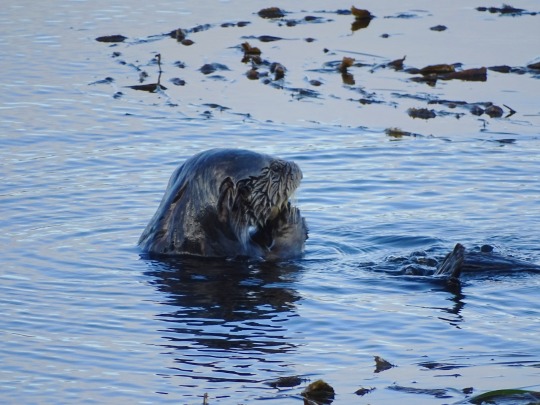
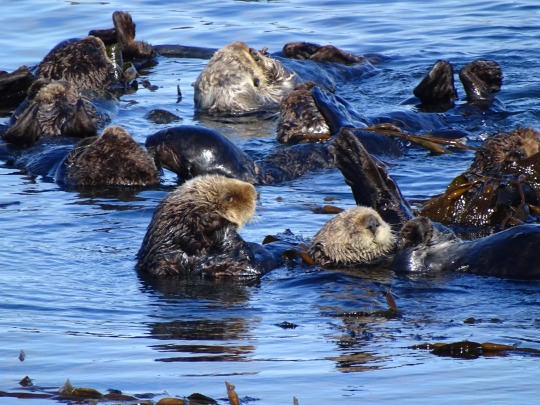
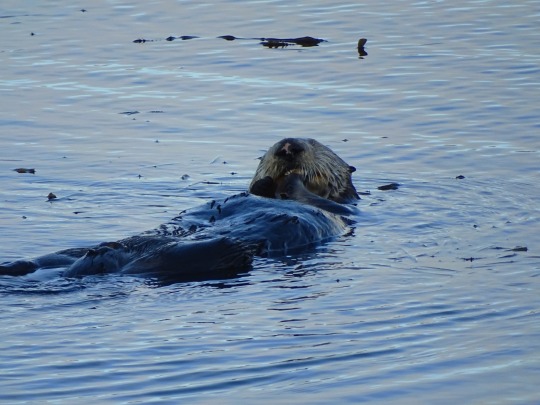
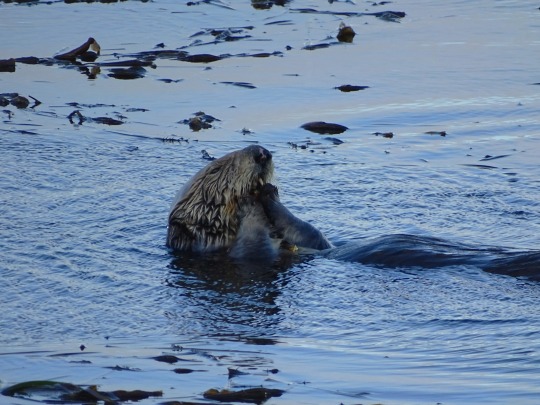

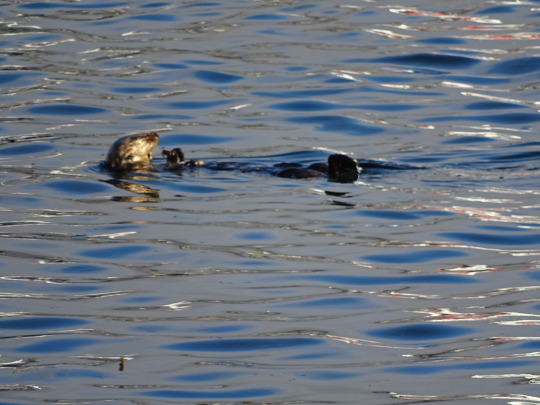
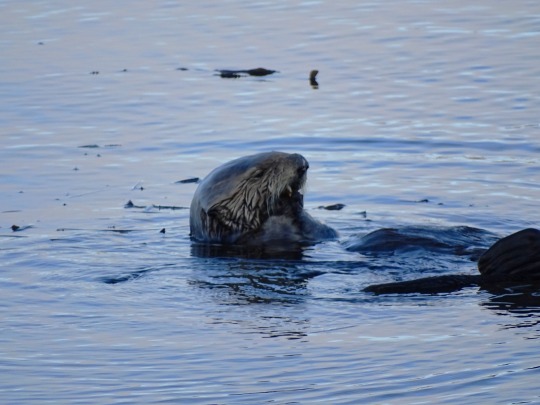
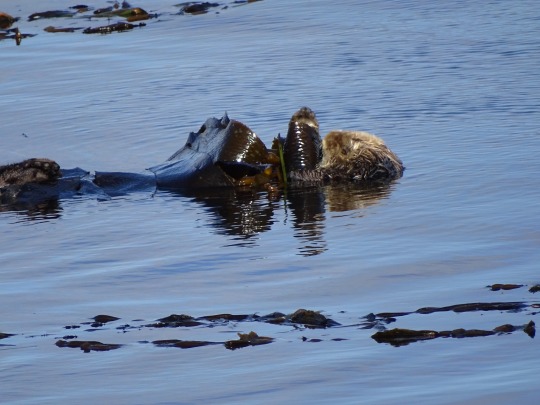
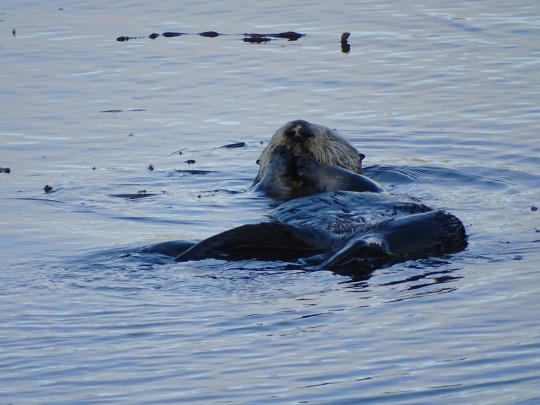
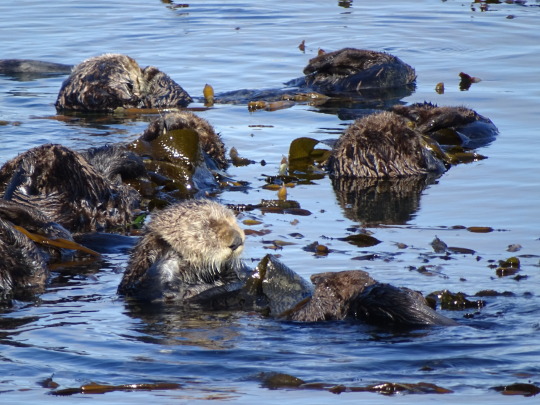
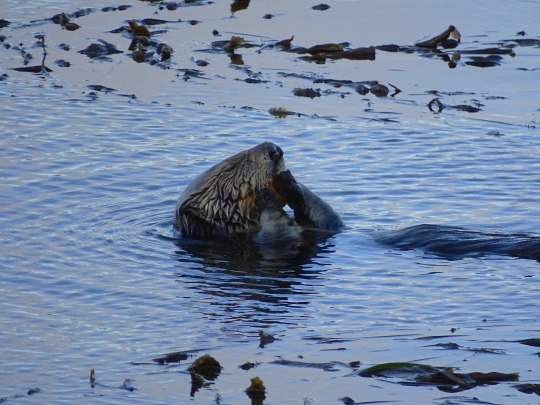
Sea Otter Heaven, Morro Bay (No. 8)
Cute, furry, and playful, Southern Sea Otters make their homes just offshore along the SLO CAL stretch of Highway 1. Sea otters are native to the north Pacific Ocean, with Monterey Bay, Big Sur, and the Central Coast as hubs of activity. They are friendly, and often stay close to shore to raise their young. This makes otter spotting particularly easy on the Central Coast.
Sea otters haven’t always been so easy to find. Their extremely dense fur attracted fur traders of the 18th and 19th centuries, resulting in a severely decreased population along the West Coast. Today, the Southern Sea Otter is considered a threatened species, listed on the Endangered Species Act since 1977. They are also recognized as a depleted species under the Marine Mammal Protection Act, having only reinhabited 13 percent of their historic range.
Southern sea otters don’t rely on blubber or fat to keep them warm, as other sea mammals do. Instead, they rely on their rich, dense fur and a high level of activity to stay warm. And that high level of activity makes Southern sea otters ravenous eaters! They can be on the move and foraging up to 50 percent of their day. In other words, to glimpse a sea otter cracking open a sea urchin for lunch is not uncommon. Mothers of baby otters are especially active, feeding their young and floating their young on their belly.
Otters can be spotted year-round, but the best seasons on the SLO CAL stretch of Highway 1 are often winter and spring. Sea otters avoid inclement weather, so look for them toward shore, near coves, kelp forests and estuaries during these seasons. Here, sea otters can be found during oceanfront walks and hikes, from piers, beaches, boardwalks, and most certainly from kayaks along the shore. And each September, the Defenders of Wildlife, Sea Otter Savvy, and California Department of Parks and Recreation sponsor Sea Otter Awareness Week.
To make the most of your otter spotting experience, bring binoculars and wear layered clothing, as weather can run cool to warm. You may also want to bring a camera as Southern sea otters are extremely photogenic! Make sure to read our Wildlife Viewing Tips, too, for ways to see these sweet, funny creatures up close without threatening their safety.
Sea Otter Fun Facts
A group of sea otters is called a “raft.”
Sea otters have a pocket under their arm where they may store prey or a rock tool used to crack open their food.
Sea otters need to rest 10-12 hours every day, and often prefer napping in kelp beds to stay anchored and safer from predators.
Morro Bay Sea Otters
The protected inlet of Morro Bay serves as habitat for about 40 sea otters, primarily females caring for pups. This number is growing as the sea otter population continues to stabilize in the wake of fur trading. Both the Morro Bay Embarcadero and Estuary provide safety for otters to find food, raise their young, and avoid predators like sharks.
Near the Morro Bay State Park marina, at the south end of Morro Bay, otters can be found near the shoreline. Walk the marina to see otters at work (and play), and be sure to bring binoculars. Perhaps the best way to see otters in the Estuary is from a kayak. Work with a kayak outfitter and/or guide to find the hot spots of sea otter activity. Often, otters will pop up right beside your paddle, just inches away.
Morro Rock provides another way to see otters in the wild. Look for kelp beds in the water to the left of the rock (just by the parking area). If you come around 8am, you’re bound to see at least a few otters bobbing on the water’s surface. The Morro Bay Embarcadero offers yet another viewing opportunity. Walk the town’s waterfront street and find plenty of places to “pull over” for a sea otter spotting. Just be sure to look for kelp beds, as those are common feeding grounds for sea otters.
Source
#Sea Otter Heaven#California sea otter#Enhydra lutris#Morro Bay#hotel#travel#original photography#vacation#tourist attraction#USA#summer 2022#Califorina#West Coast#San Luis Obispo County#wildlife#animal#seaweed#Morro Rock Ecological Preserve#Pacific Ocean#beach#cityscape#landscape#seascape#kelp#fauna#landmark#marine mammal
1 note
·
View note
Text
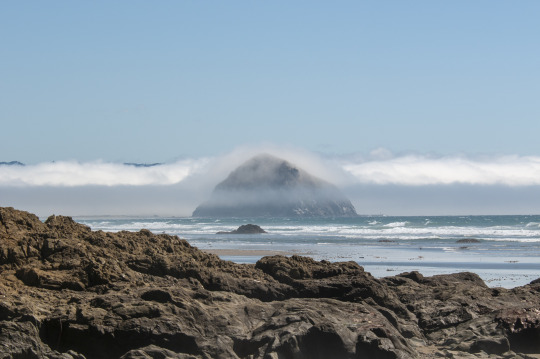
🚨 BIG NEWS: We invite you to participate in the possible designation of a national marine sanctuary on the central coast of California.
The Northern Chumash Tribal Council submitted the sanctuary nomination in July 2015, and NOAA is considering sanctuary designation to protect the region’s important marine ecosystem, honor the cultural values of the local Indigenous communities, and protect a collection of historically significant shipwrecks and cultural sites. The nominated area stretches along 156 miles of coastline connecting the boundaries of Monterey Bay and Channel Islands national marine sanctuaries.
We want to hear from you! Visit sanctuaries.noaa.gov/chumash-heritage/ to learn more about the proposal and how you can submit an official comment online or by mail.
(Photo: Robert Schwemmer/NOAA. Image description: Morro Rock, a volcanic plug, is located at the entrance to Morro Bay, tribal place names Salinan Le’samo and Chumash Lisamu’.)
96 notes
·
View notes
Text
Protecting oceans
Here are some ideas to consider to help protect our oceans.
Eat only sustainably harvested fish and shellfish. Some fish farms are operated in a sustainable manner and others are not, so farmed fish are not always a better option. Do a bit of research to find sustainable sources for your seafood. The Monterey Bay Aquarium has excellent information on sustainably harvested fish and shellfish. https://www.seafoodwatch.org/
Choose nontoxic chemicals, because toxic chemicals harm habitat and creatures in waterways, and can bioaccumulate in the food chain.
Choose sunscreen that is not harmful to corals and other aquatic life. Key ingredients to avoid are Oxybenzone and Octinoxate. Additionally, look out for Benzophenone-1, Benzophenone-8, OD-PABA, 4-Methylbenzylidene camphor, 3-Benzylidene camphor, and Octocrylene.
Don’t litter. Litter may get washed or blown into waterways, where it threatens habitats and the creatures who live there. Both freshwater and saltwater areas require this protection.
Visit oceans, lakes, rivers and streams responsibly. Habitat can be destroyed by careless visitors, and it can take decades or centuries to recover. Many things can damage habitats, including standing on coral reefs, disturbing bottom sediments, overfishing, and allowing chemicals to enter the waterways.
Reduce your use of single-use plastics and microplastics. Much has been written on the dangers of plastic in the oceans, so I won’t repeat it here.
Overfertilizing may result in surface water runoff carrying excess fertilizer into waterways and the ocean. If too large a quantity of the nutrients in fertilizer reaches the waterways and oceans, oxygen depletion and algal blooms can result, killing marine life.
As I mentioned in my last post, reduce your carbon footprint. Rising carbon levels in the atmosphere are harming the oceans and the creatures that live there.
14 notes
·
View notes
Text
5 US Beaches That Should be On Your Bucket List
The United States is full of amazing beaches that are perfect for a beach vacation. From the Atlantic Coast to the Pacific Coast and everywhere in between, there’s an abundance of beautiful US beaches that you should make sure to visit at least once in your lifetime. Here are 5 beaches in the US that you must visit in your lifetime.
La Push, Washington: A small beach town located on the Olympic Peninsula, La Push is one of the best-kept secrets in the Northwest. With its stunning views of the Pacific Ocean and its unique rock formations, La Push has become a popular destination for photographers and adventurers alike. During low tide, you can explore some of the hidden sea caves or enjoy a relaxing walk along one of its many trails. It’s definitely worth a visit!
Cannon Beach, Oregon: Located just south of Astoria on the Oregon coast, Cannon Beach is known for its iconic Haystack Rock formation rising up from the surf. This beach offers plenty of activities including hiking, surfing, fishing and even whale watching during certain times of year. Don’t forget to take time to relax and enjoy everything this beach has to offer – you won’t regret it!
Hanauma Bay Nature Preserve, Hawaii: One of Oahu’s most beloved beaches is Hanauma Bay Nature Preserve. This protected area is home to an abundance of marine life including colorful fish and coral reefs that attract snorkelers from around the world. Whether you want to explore beneath the waves or just soak up some sun on shore, Hanauma Bay Nature Preserve should definitely be added to your list!
Cape May Point State Park, New Jersey: If you’re looking for a peaceful retreat away from all the hustle and bustle of city life then Cape May Point State Park is ideal for you. This park features breathtaking views of Delaware Bay with sandy beaches perfect for lounging or walking along nature trails where you can spot wildlife like foxes and ospreys. Don’t forget to stay until sunset for an extra special treat!
Santa Cruz Beach Boardwalk California: Santa Cruz Beach Boardwalk is perfect if you want a little bit more action than just relaxing at the beach. This historic amusement park features classic carnival rides like roller coasters as well as delicious treats like funnel cakes and ice cream cones right off the boardwalk. Afterward, head down onto Main Beach which offers stunning views of Monterey Bay while still being close enough to all kinds of shops and restaurants making it easy to get back into town after sunset!
There are so many incredible beaches across America that we couldn't fit them all into this post! But if you're looking for some amazing places to relax by water or just have fun with friends and family these five should be at top your list when planning your next beach adventure! So grab your sunscreen and start exploring - there's so much beauty waiting out there!
2 notes
·
View notes
Note
From the Washington Post:
Scientists uncover the secret of the deep-sea ‘octopus garden’
By Kasha Patel Updated August 23, 2023 at 3:15 p.m.
About 80 miles from the coast of central California, thousands of octopuses gather on rocks two miles below the surface of the ocean. This location, dubbed “octopus garden,” is the largest known aggregation of these mollusks in the world, though it doesn’t attract much else of equal size. Scientists have been puzzled why so many octopuses plant themselves in these abysmal, colder waters — until now.
After three years of monitoring the area, researchers found the site is a popular mating and nesting ground for pearl octopuses, where hot springs help embryos develop twice as fast than expected at this depth. The faster development increases a hatchling’s likelihood of survival through the brooding period, according to a study released Wednesday in the journal Science Advances.
The findings, which investigate an unexplored corner of the ocean, help researchers better understand how coldblooded animals adapt in a variety of environments.
“We’re supposed to be managing these areas and protecting them for future generations, and we didn’t even know that this habitat was down there [and] what kind of impact it was having,” said Andrew DeVogelaere, research ecologist and study co-author. “You’re the first human eyes in all of history to see this part of the planet.”
The discovery of the octopus garden back in 2018 was lucky, said DeVogelaere, who runs the research program for NOAA’s Monterey Bay National Marine Sanctuary.
For more than two decades, researchers have been studying an extinct underwater volcano called the Davidson Seamount. The seamount, located southwest of Monterey, Calif., is one of the largest seamounts in the world and known for its beautiful deep sea corals. It is also one of the most well-studied seamounts in the world, so when DeVogelaere wanted to explore it further, others were skeptical he would find anything new.
“We said, ‘Don’t waste your time going there,'” said Jim Barry, senior scientist at the Monterey Bay Aquarium Research Institute and lead author of the new study. “We’ve been all over it, you’re not going to discover anything that we haven’t already discovered, or very likely not.”
Nevertheless, Barry and his colleagues said there is an unexplored area on the foothills of the seamount that could be interesting to investigate. The researchers then sent a ship to study the area.
DeVogelaere, who was following along on a video feed, said it was at first pretty dull, just a lot of mud. Then suddenly, they spotted a hoard of balls, like opalescent pearls, on the seafloor.
They had found the “octopus garden,” home to at least 6,000 nesting, Muusoctopus robustus — commonly known as pearl octopuses. The researchers estimate there could be 20,000 in this nursery.
For three years, the team monitored the population through cameras and dives with remotely operated vehicles, measuring water temperature and oxygen. They found only adult males and female octopus, developing eggs, and hatchlings at the location, indicating the site was used exclusively for mating and nesting.
They also noticed shimmering water, which was indicative of a thermal spring — something “totally new in this area,” Barry said. He explained the shimmering water appears when warm water (such as from a thermal spring) and cool waters mix. Water temperature from these thermal springs can reach nearly 51 degrees Fahrenheit, while ambient water temperature is around 35 degrees. The warm water is only bathing a small area about a foot above the seabed, but scientists found many female octopuses brooding in the warm pool.
The team reasoned that the warmer water helps accelerate the development of the embryo, speeding up the metabolic processes. Typically at near-freezing temperatures in the deep ocean, researchers expected pearl octopus eggs at least five years to hatch. These hatched in just two years.
“As you get into colder waters, whether it’s polar waters or deeper waters, colder water slows down metabolism, slows down metabolic rates, slows down growth and embryonic development rates,” Barry said. “We think that the warm water is providing some sort of reproductive benefit for them.”
Geomicrobiologist Beth Orcutt, who was not involved in the study, said the “most exciting aspect of this new study” is the confirmation that the warmer water does actually shorten brooding times.
“This had been hypothesized but not documented until now,” said Orcutt, vice president for research at the Bigelow Laboratory for Ocean Sciences in Maine.
The octopuses are the biggest and most abundant animals in the garden, but their presence does attract predators. The shorter brooding time probably reduces the embryo’s risk to predators skulking around to eat the eggs, such as shrimp. Scavengers also roam the area to feed on the mother octopus, who spends all of her energy caring for the egg and dies after the baby hatches.
“The deeper you go, the less food there is … it has already been chewed up by the animals that live in the water column, including microbes, fish, whatever,” said Barry. The octopus carcasses are important because they “become part of the food web” at lower depths.
The team thinks the octopus garden is just one of many deep sea octopus environments out there. Just five miles away from the garden, researchers found another octopus nursery near thermal springs. In June, another group of researchers discovered a nursery near thermal springs in Costa Rica.
Orcutt, who helped lead the Costa Rica expedition, said both of these discoveries show that these small outcrops of rock on the seafloor, which are often passed over for study to focus on larger seamounts, can be incredibly rich and productive sites of life.
“I don’t think it’s a one off curiosity,” DeVogelaere said. “Most of the deep sea hasn’t been looked at.”
I just heard about Octopus Gardens. Why they curled up in a ball like that? I read about how its warm, thermal vents, mother protects the eggs but no one mentions the octopus ball! Is that the mother or the egg?
these guys?

the curled up octopus balls are the brooding female adult octopuses! I'm not sure why they do that but they're protecting their eggs
620 notes
·
View notes
Photo
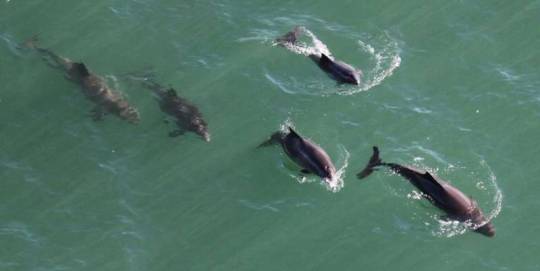
California harbor porpoises rebound after coastal gillnetting stopped
NOAA Headquarters - January 2021
Harbor porpoises have rebounded in a big way off California. Their populations have recovered dramatically since the end of state set-gillnet fisheries that years ago entangled and killed them in the nearshore waters they frequent. These coastal set-gillnet fisheries are distinct from federally-managed offshore drift-gillnet fisheries. They have been prohibited in inshore state waters for more than a decade. The new research indicates that the coastal set gillnets had taken a greater toll on harbor porpoise than previously realized.
The return of harbor porpoises reflects the first documented example of the species rebounding. It's a bright spot for marine wildlife, the scientists write in a new assessment published in Marine Mammal Science.
"This is very good evidence that if we can eliminate the deaths in fishing nets, marine mammal populations can come back in a big way," said Karin Forney, a research biologist with NOAA Fisheries' Southwest Fisheries Science Center who is based in Monterey Bay.
The State of California managed set-gillnet fisheries for white seabass and halibut in coastal waters off central California beginning in the 1930s. Before the 1980s, there was little solid information about the impacts of coastal set-gillnets on protected species such as marine mammals and seabirds. Harbor porpoises were vulnerable to this coastal fishery because they frequent shallow inshore waters where the nets were historically set.
The scientists estimated, based on a combination of data, that as many as 300 harbor porpoises per year may have been killed in California's coastal set-gillnet fisheries during the 1980s. One 1994 study confirmed the deaths of more than 50 harbor porpoises in Monterey Bay alone, with the authors speculating that the true number was far higher.
Rebound for Populations
In the late 1980s, fishery protections for seabirds and southern sea otters benefited harbor porpoises, too. Three of the four stocks of harbor porpoises off the California Coast rebounded as the coastal set-gillnets were largely phased out, the new study shows. These coastal gillnets have been prohibited north of the Sonoma-Mendocino County line (north of Santa Rosa) since the early 1900s. That safeguarded the fourth stock, the more remote Northern California/Southern Oregon population.
The Morro Bay population most clearly reflected the rebound. Biologists estimated the population numbered about 570 animals in 1991. Surveys in the last few years estimate the population at approximately 4,200 porpoises, a roughly seven-fold increase.
The rapid growth of the Morro Bay stock suggests that bycatch had depressed the population, especially before and during the 1980s. The population decreased more than researchers had recognized previously, the scientists reported in the new study. They concluded that it "is likely that unmonitored fisheries had a dramatic adverse impact on the Morro Bay population before monitoring of harbor porpoise began in 1986."
"We didn't really know how heavily the Morro Bay population had been impacted by the white seabass and halibut gillnets at the time," Forney said. "It is now clear that the toll was more severe than we thought."
She said the finding has significance for other marine mammals still threatened by gillnets. Unlawful gillnets in Mexico have pushed the critically endangered vaquita to the brink of extinction, for example. Repeated surveys have found that the number of surviving animals may now be in the single digits. The vaquita is the world's smallest porpoise that lives in the turbid waters of the Gulf of California, where those gillnets target a large and also endangered native fish that is prized in China as traditional medicine.
"The story in California tells us that these animals are capable of recovering if we eliminate the factors causing their decline, in this case, gillnet bycatch from coastal fisheries within the range of harbor porpoise," Forney said.
Surveys Track Porpoise Numbers
Aerial surveys for harbor porpoises off California began in 1986, collecting data that formed the foundation of the new population assessment. Scientists supplemented the surveys with additional porpoise sightings from surveys of endangered leatherback turtles. The consistency of the surveys that continued over decades make them valuable in detecting changes. California harbor porpoises were once considered a single population. Beginning in 2001 biologists recognized there were four genetically distinct stocks: Morro Bay, Monterey Bay, San Francisco/Russian River, and Northern California/Southern Oregon.
The new analysis shows that three of the four stocks increased in number since the days of coastal set gillnet fishing, and have recently begun to stabilize:
Morro Bay: Increased almost 10 percent a year after most coastal gillnetting ceased by 2001, now numbering about 4,200 porpoises.
Monterey Bay: Population grew faster after coastal gillnetting stopped in 2003, but not as fast as Morro Bay. Most recently estimated at about 3,760 porpoises.
San Francisco/Russian River: Numbers fell until coastal gillnetting was prohibited in 1987. Beginning about 2009, hundreds of harbor porpoises became regularly visible in San Francisco Bay, perhaps benefiting from improved water quality, and earlier changes such as the removal of an anti-submarine netting that blocked the Golden Gate. Now estimated at 7,777 individuals.
Northern California/Southern Oregon: Lesser known population that is California's largest at about 12,160 porpoises.
Drift gillnet separate fishery
A small federal drift-gillnet fishery for swordfish continues in deeper waters miles off California. This fishery operates too far offshore to affect harbor porpoises. The fishery adopted stringent bycatch reduction measures in the 1990s and early 2000s to protect marine mammals and sea turtles. To protect marine mammals, the top of the nets hang below the surface so marine mammals can pass overhead. Acoustic "pingers" warn marine mammals of the nets' presence. To protect leatherback sea turtles, federal fishery managers close a large area off California to drift gillnets each year when the turtles are present. The measures have dramatically reduced bycatch of marine mammals and sea turtles.
"We now know much more about how to protect these species from fishing impacts," Forney said, "and we are seeing the results."
141 notes
·
View notes